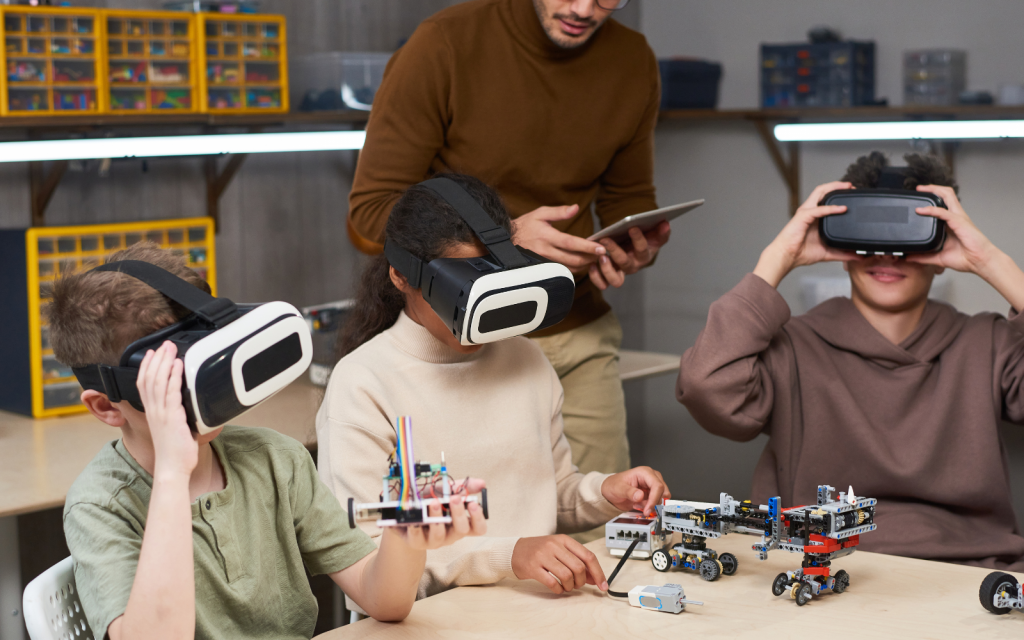Starting and running your own business takes hard work and a can-do attitude. Typically, entrepreneurs are the kinds of people who can identify and solve problems innovatively, are willing to take risks and learn from mistakes.
But many entrepreneurs also have a set of skills that anyone can learn, and use in work and life. Examples include adaptability, problem-solving, collaboration, communication, creative thinking, innovation and resilience.
South Africa’s Department of Basic Education sees these skills as an important part of the school curriculum, especially since about 60% of South Africans aged 16-24 don’t have work. The department’s 2016 Entrepreneurship in Schools Sector Plan is being implemented by the organisation E3 (E-cubed) to help all learners develop these skills. A department workshop reported that by the end of 2023, 13,215 (or 53%) of South African schools had put parts of this plan in place.
Can more be done?
As education researchers, we carried out a study to see how entrepreneurship education could be expanded in South Africa’s Technology curriculum at secondary school level. The subject of Technology is an ideal vehicle for integrating entrepreneurship education because it is problem-based and combines practical knowledge and skills.
Previous studies have explored how Technology education can promote entrepreneurship. But they have largely overlooked the perspectives of teachers who put the curriculum into practice. This was our new study’s focus.
We sought the views of 30 senior phase (grades 7-9) Technology teachers. Almost all said they thought it was possible to include entrepreneurship in the Technology curriculum. They mostly showed a positive attitude to the idea and saw it as having value for the learners. They suggested some practical ways of combining the subjects.
Teachers play a pivotal role in turning curriculum ideas into practical learning experiences for learners. Taking their views on board could make a difference to the success of the plan in preparing learners for life and employment in South Africa.
Teachers’ points of view
The teachers who were part of our study had at least three years’ experience of teaching the subject, and 19 of them had more than 10 years’ experience.
The majority of these teachers believed it was feasible to integrate entrepreneurship into the current Technology curriculum without much difficulty.
One suggested that including entrepreneurship might increase learner interest in Technology education. This aligns with our belief that when learners perceive the subject as relevant to their lives – for instance, by showing them how to generate income – their motivation and engagement in the subject will increase.
Most teachers also said it would be good to introduce entrepreneurship education before grade 9 (when learners are around 15 years old). Many learners (up to 40%) leave school at that point. They saw this as enabling school leavers to create their own work opportunities.
One teacher noted:
Learners need to develop the skills and mindset to create their own job opportunities, and if entrepreneurship skills are developed, they will be able to be self-sustainable.
There were also concerns, however.
The teachers pointed out that the Technology curriculum was already full of content. Adding new entrepreneurship-related material would be impractical. Instead, they suggested identifying existing Technology curriculum content that could be linked to entrepreneurship. For instance, the products learners already design and make as part of the curriculum could be tied to entrepreneurial thinking by exploring their potential as marketable goods.
Teachers proposed connecting entrepreneurship education to specific topics, such as cellphone towers, the jaws-of-life (emergency rescue equipment) and electromagnets. Learners could design innovative, problem-solving products with real-world applications.
Read More: ChatGPT in education: breakthrough or disruptive innovation?
They said additional topics in the curriculum could be adapted to develop learners’ entrepreneurship skills. For instance, topics like “emergency shelters for disaster victims” are less prescriptive and allow learners to be creative and original – qualities essential for entrepreneurship.
Teachers also suggested new content for future curriculum updates. Learners could create functional products that combine technical skills with entrepreneurial ideas and are relevant to real life. Examples included doormats, toys, steam engine cars, carpentry products and household tools. Some teachers proposed merging product development with services like baking, cooking and running mobile tuckshops. All could be linked to existing Technology content.
Understanding the value of entrepreneurship
Our study participants’ suggestions show that they tend to think of entrepreneurship as mostly being about making a living. This is certainly important in South Africa, but we believe that to unlock the full potential of entrepreneurship education within Technology, teachers need to be trained to understand and appreciate the full value of entrepreneurship.
The knowledge and skills associated with entrepreneurship can also create social value when applied to solve problems in communities, not necessarily for profit. Teachers who appreciate this will be able to explain it better to their learners. This could open up more opportunities for learners to apply what they learn in Technology education to solve real-life problems.
In conclusion, we argue that incorporating entrepreneurship education into the Technology curriculum holds great potential for addressing South Africa’s youth unemployment crisis. To do this successfully, existing curriculum content should be linked to entrepreneurial thinking, and teachers should receive the necessary training to guide learners in applying these ideas to their daily lives and future careers.
Master’s student Faren McCarthy-Kettledas carried out the study this article is based on, supervised by Prof Deon van Tonder.
- is a Senior Lecturer in Entrepreneurship, Consumer Studies and Technology Education, North-West University
- This article first appeared in The Conversation




